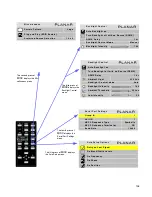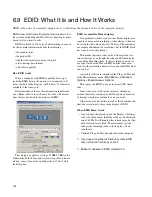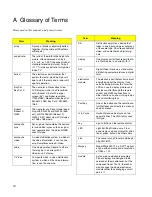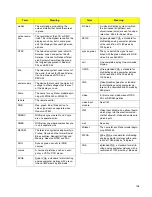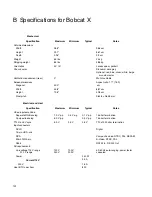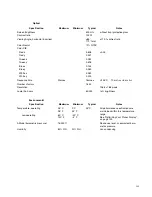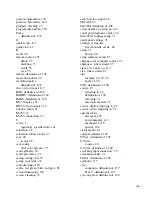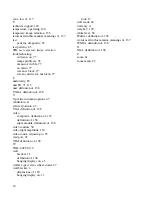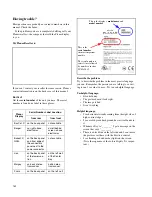
135
6.9 EDID: What It Is and How It Works
EDID is the name of a method computers use to determine the characteristics of the computer monitor.
EDID stands for Extended Display Identification Data. It is
the system behind Plug and Play. But just knowing its name
doesn’t tell you how it works.
EDID is a block of 128 bytes of data residing in a moni-
tor that contains information about the following:
• the manufacturer,
• the product ID,
• whether the monitor is analog or digital,
• video timings [resolutions],
• and color capability.
How EDID works
When a computer with EDID capability boots up, it
reads the EDID data in the monitor it is connected to. It
stores this data in the Registry (in Windows™) where it is
available to the video card.
Different video cards use this information in different
ways. Many video cards will not send video with resolu-
tions that are not listed in the monitor’s EDID.
This dialog box shows a setting of
1366
X
768
for the
3rd monitor. If the #3 monitor were not capable of this res-
olution, some video cards would not show 1366 x 768 in
the dialog box.
EDID too small for Planar displays
One problem with this system is that Planar displays are
capable of many more resolutions (video timings) than can
be stored in a data block of only 128 bytes. Planar displays
are capable of hundreds of resolutions, but the EDID block
has room to store only dozens.
This means that some video cards will not put out cer-
tain resolutions, even though the connected Planar display
is capable of handling them. If the resolution you want to
use is not listed in the Planar EDID, and the video card
won’t list that resolution unless it
is
seen in the EDID, what
can you do?
A possible solution is to
un
check the Plug and Play box
in the Miscellaneous menu (
Main Menu > Advanced
Options > Miscellaneous Options)
.
This causes the EDID to use an incorrect CRC check-
sum.
Some video cards will see the incorrect checksum,
assume the data is corrupted, and fall back on a default set
of timings, which may include the one you want.
Other cards may not bother to look at the checksum and
limit the resolutions to those in the display’s EDID.
When EDID doesn’t work
• Don’t change the refresh rate in the Display > Settings
tab > Advanced menu; the Bobcat X has a fixed refresh
rate of 60 Hz. It will handle other refresh rates, but the
native refresh rate is fixed. The electronics system
changes the incoming video to the display’s fixed
refresh rate.
• Uncheck Plug and Play box and reboot the computer.
✎
If you use a long-line distribution system, EDID
may not function correctly or at all.
✎
Bobcat X adheres to EDID standard 1.3.
Summary of Contents for Bobcat X SN-4045-WX
Page 1: ...Bobcat X SN 4045 WX User Guide...
Page 2: ...2...
Page 3: ...SN 4045 WX Bobcat X 40 Direct view LCD Panel User Guide 020 0550 00B...
Page 7: ...v...
Page 13: ...6...
Page 17: ...10...
Page 19: ...12...
Page 23: ...16...
Page 25: ...18 The Base Model shown above has only and Analog VGA connector The Video Model...
Page 31: ...24...
Page 35: ...28...
Page 37: ...30...
Page 47: ...40...
Page 49: ...42...
Page 51: ...44...
Page 63: ...56...
Page 67: ...60...
Page 71: ...64...
Page 81: ...74...
Page 83: ...76...
Page 87: ...80...
Page 91: ...84...
Page 136: ...129 6 6 Drawings Dimensions in inches...
Page 137: ...130...
Page 139: ...132...
Page 143: ...136...
Page 149: ...142...
Page 155: ...148...








